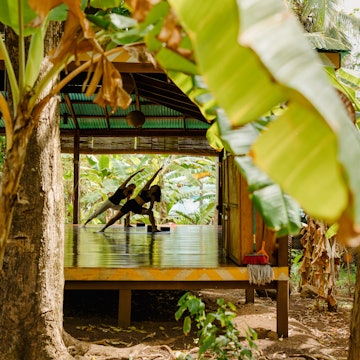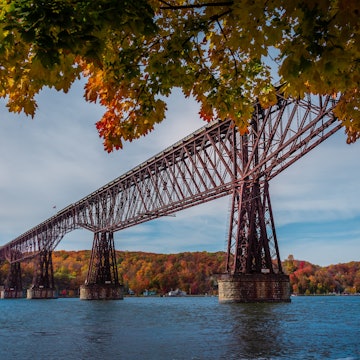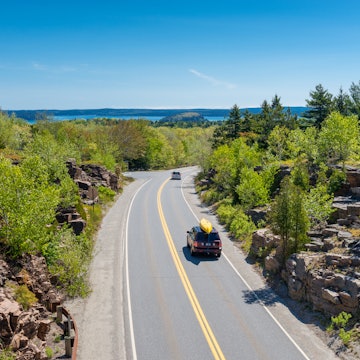
The best free things to do in Hudson Valley from gallery hopping to mountain adventures

Feb 14, 2022 • 11 min read

From mountain adventures to world-class museums, see the best of the Hudson Valley without spending a dime © MundusImages / Getty Images
Gilded Age mansions, million-dollar views, contemporary art galleries and storybook hamlets: the Hudson Valley might exude extravagance, but enjoying the region doesn’t always mean breaking the bank. An abundance of charming main streets, free museums and outdoor adventures make this refuge north of New York City an affordable place to explore.
The Hudson Valley’s most desirable destinations don't cost money anyway – they’re centered around the mountains, forests and lakes that have wooed artists and intellectuals to the photogenic villages on either side of the Hudson River for generations. Plan your visit around these 11 excursions to see the region’s riches and barely spend a dime.
Go gallery hopping on Hudson's Warren Street
Warren Street, ultra-hip Hudson's mile-long main drag, is a veritable outdoor museum. Art galleries, antiques stores and cutting-edge boutiques housed in historic buildings buzz with the energy of Brooklyn's Williamsburg. Although the goods often cost a pretty penny, popping in and out of the shops to ogle them is free.
To admire works by emerging and established artists, head to the Carrie Haddad Gallery. Explore the bottom floor's rotating exhibits before heading upstairs to peep works by Mark Beard, famous for his provocative male nudes. FINCH, an antique store, is a mid-century modern menagerie filled with handsome home decor.
For avant-garde threads, thumb the racks at Kasuri – each article of clothing is a visual essay on contemporary fashion. Don't forget to enjoy the street's treasures too: Federal-style fortresses and Victorian facades are just as eye-catching as the stores they house.
While weekend afternoons are best for wandering, consider planning a trip around the Hudson Gallery Crawl, held on the second Saturday evening of every month. In warm weather, buskers serenade locals as they hop around participating shops, pop-ups and restaurants during this citywide shindig.

Venture into the Hudson Highlands
Hudson Highland State Park Preserve is an 8000-acre haven for outdoor enthusiasts. Mountain vistas, historic ruins, undeveloped forests and rocky scrambles await on more than 70 miles of hiking trails snaking along the Hudson River between Peekskill and Beacon.
Whether you're visiting a nearby town like Cold Spring or traveling from NYC for a quick nature fix, visiting the preserve is a no-brainer – the Highlands are home to the region's most dynamic and easily accessible adventures. The only question is which path to choose.
For panoramic views, take the 4-mile out-and-back trek to Mt Beacon Fire Tower. The steep ascent passes ruins from an early 20th-century casino and railway on its way to the 1600-ft peak – the highest in the Highlands.
Athletically-minded hikers will appreciate the arduous climb along Breakneck Ridge, a 3-mile journey that requires fancy hand- and footwork while scaling rocky outcroppings. It's also one of the best trips for car-free New Yorkers – a train from Grand Central Terminal stops at the trailhead on weekends.
Bull Hill, a 5.4-mile loop near Cold Spring, captivates with its peaceful woodlands, abandoned 20th-century quarry and Cornish Estate ruins, built in 1910.
Although the trails are accessible year-round, hiking is most pleasant on balmy days between May and October. Parking at trailheads throughout the preserve is free; arrive early to secure a spot.
Best hikes in the Hudson Valley
Tour Kingston's historic architecture
If the buildings of Kingston could talk, they'd tell tales of 17th-century Dutch colonizers, Revolutionary War brawls and 19th-century industry tycoons. Stroll through the city's three main sections – each with a wealth of landmarked buildings – to see American history unfold through architecture.
The Kingston Stockade District, an eight-block area established in 1658 as part of New Netherland, is home to roughly two dozen 18th-century structures. Stop by the intersection of Crown and John Streets, known as the Four Corners, to see the only US intersection where all four buildings predate the Revolutionary War.
Midtown, the city's arty epicenter, oozes Edward Hopper allure (the artist was born an hour south in Nyack) but with a 21st-century twist. Contemporary murals commissioned by the annual O+ Festival give Kingston's Americana style some Bushwick swagger. Use the festival's mural map to find the best works.
In Rondout (also called Downtown), stately homes built between the 1850s and 1920s stand on East and West Chestnut Street as reminders of Kingston's industrial heyday. Amble from here to the Hudson River to see well-preserved Tudor, Colonial Revival, Second Empire and Italianate–style beauties.
Check out the free self-guided walking tours provided by Friends of Historic Kingston for the Stockade and Rondout districts.
Hike around outdoor sculptures at Art Omi
Art Omi is similar to Storm King, Cornwall's renowned outdoor art complex, with one major exception – it's free. Hike around this art-and-architecture park to see mammoth-size sculptures sprinkled around 120 acres of meadows and forests.
Immersive works, like Hou de Sousa's colorful Prismatic, turn hilly fields into adult playgrounds. Alex Schweder and Ward Shelley's ReActor – a glass house precariously perched atop a 15-ft concrete column – rocks in the breeze like a meditation on modern living. The grounds are splendid in all four seasons, but the most thrilling is autumn when fall foliage gives modern artists a run for their money.
Although the outdoor museum is best on sunny days, an indoor gallery with rotating exhibits makes rainy visits worthwhile too. Art Omi is a must-see for anyone staying near Hudson – the site is a 15-minute drive away.
Best places to visit in the Hudson Valley
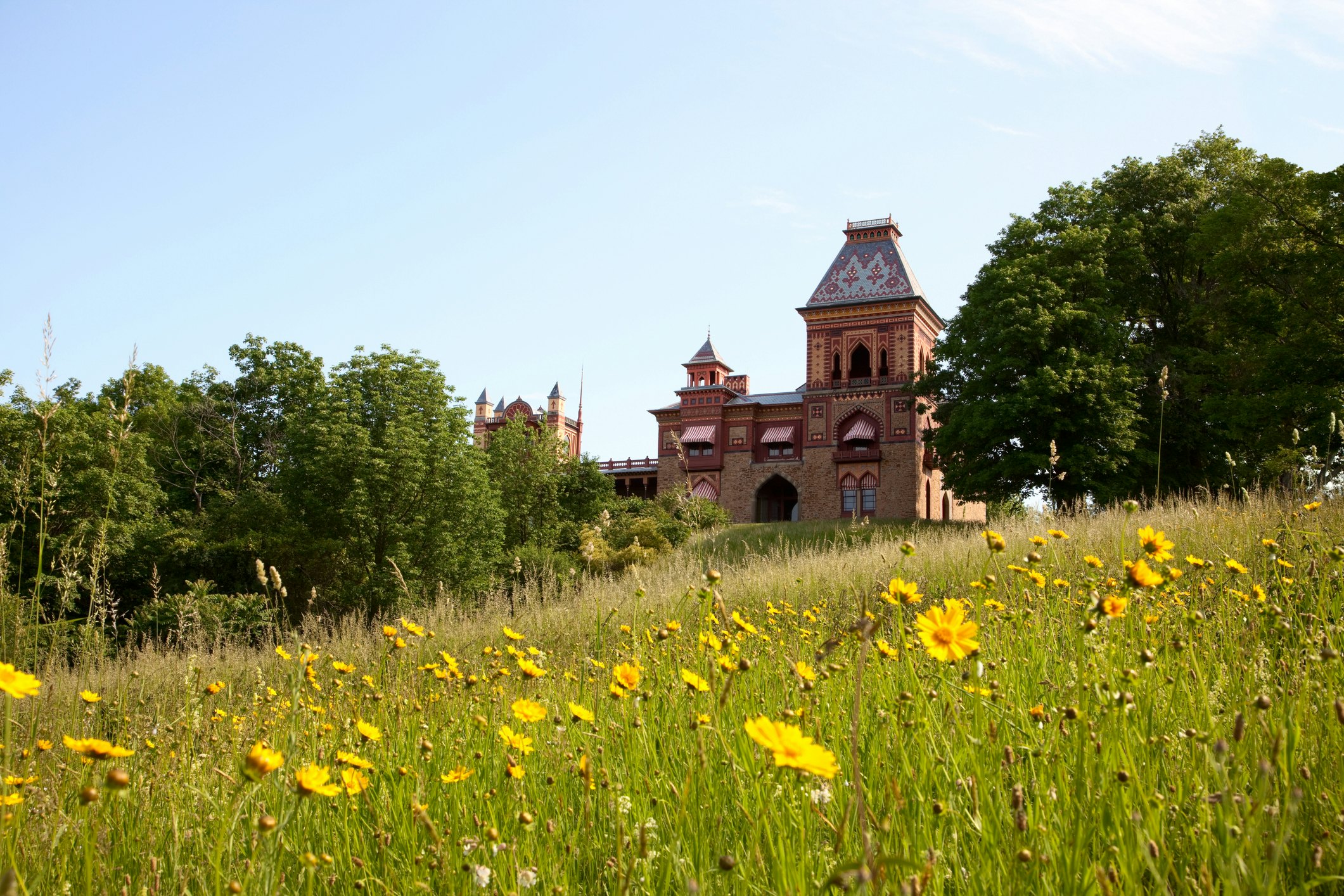
Visit the homes of acclaimed artists along the Hudson River Skywalk
The trek between Thomas Cole National Historic Site and Olana is the Hudson Valley's best-of list in one trail – the Hudson River Skywalk. Pastoral estates bookend the journey, which skirts two trendy towns and crosses a cantilever bridge with Hudson River and the Catskill Mountains views. Travelers can enjoy each section on its own, but combined, this three-mile jaunt or drive is one of the easiest ways to see the Hudson Valley's wonders without spending money.
Begin at the former home of 19th-century painter Thomas Cole, founder of the Hudson River School and father of American landscape art.
There's no better view than the panorama seen from the Federal-style main building dating to 1815, which now serves as a museum dedicated to Cole and his contemporaries. Exploring the grounds is free, but stepping inside to see Cole's interpretation of the Hudson Valley is worth the price of admission.
From here, head through the quaint village of Catskill before crossing Rip Van Winkle Bridge, built in 1935 and named after author Washington Irving's 19th-century folk icon.
A Moorish-Victorian mansion perched on a hilltop near Hudson, Olana looms across the river like the setting for a Gothic fairytale. Frederic Church, Cole's protege, spent decades refining the 250-acre grounds, which include manicured meadows, woods, a lake and the ornate home he designed with the help of Calvert Vaux, Central Park's architect.
Visit in spring, when buds erupt around the property and migrating birds stop to admire the scenery. Olana's grounds are free; entrance to the mansion-turned-museum costs $20.
Beat summer's swelter at a lake
When Hudson Valley summers reach their boiling point, cool off in one of the lakes dotting the landscape. Public beaches with amenities like bathrooms and boat rentals cost a nominal day fee, but in some places, swimming is free.
The $7 entrance fee for Rudd Pond, a quiet lake near Millerton in Taconic State Park, is well worth the access to bathrooms, picnic tables, water fill-up stations and kayak rentals. For those enchanted by the lake's golden beach and fishing bounty, consider pitching a tent – camping runs from May to September.
Big spenders willing to fork over $10 can enjoy the crystal waters at family-friendly Lake Taghkanic. The 168-acre lake is a Hudson Valley hot spot thanks to its sandy bottom, expansive beach, on-site amenities and lifeguards. Visitors can rent kayaks, canoes and rowboats for an additional $10 per hour.
As for Pine Meadow Lake, a 72-acre pool in Harriman State Park, swimming only costs a little leg work. Hike two miles along the Pine Meadow Path to join daring divers cannonballing from cliffs into clear water below. For an equally cheap and thrilling excursion, head to Fawn's Leap or Rat's Hole – two nearby swimming holes hidden along Rte 23A in the Kaaterskill Wild Forest.
Meet the animals at Muscoot Farm
Grazing cows, braying donkeys and a playful Tamworth pig are a few of the residents you'll meet at Alfred B. DelBello Muscoot Farm – a free, kid-friendly destination located on 777 acres of Katonah's bucolic landscape.
Walking around the property, which started as a dairy farm in 1880, is a lesson in the Hudson Valley's agricultural past. From the historic red barn to the brooder house, Muscoot Farm looks like the real-life setting of Charlotte's Web (author EB White, who wrote the acclaimed children's novel in 1952, grew up only 30 minutes away in Mount Vernon).
Spend an hour or two peeking inside animal pens, strolling around six-plus miles of trails and admiring the immaculately restored architecture. A farmers' market attracts a bustling local crowd on Sundays between May and October.
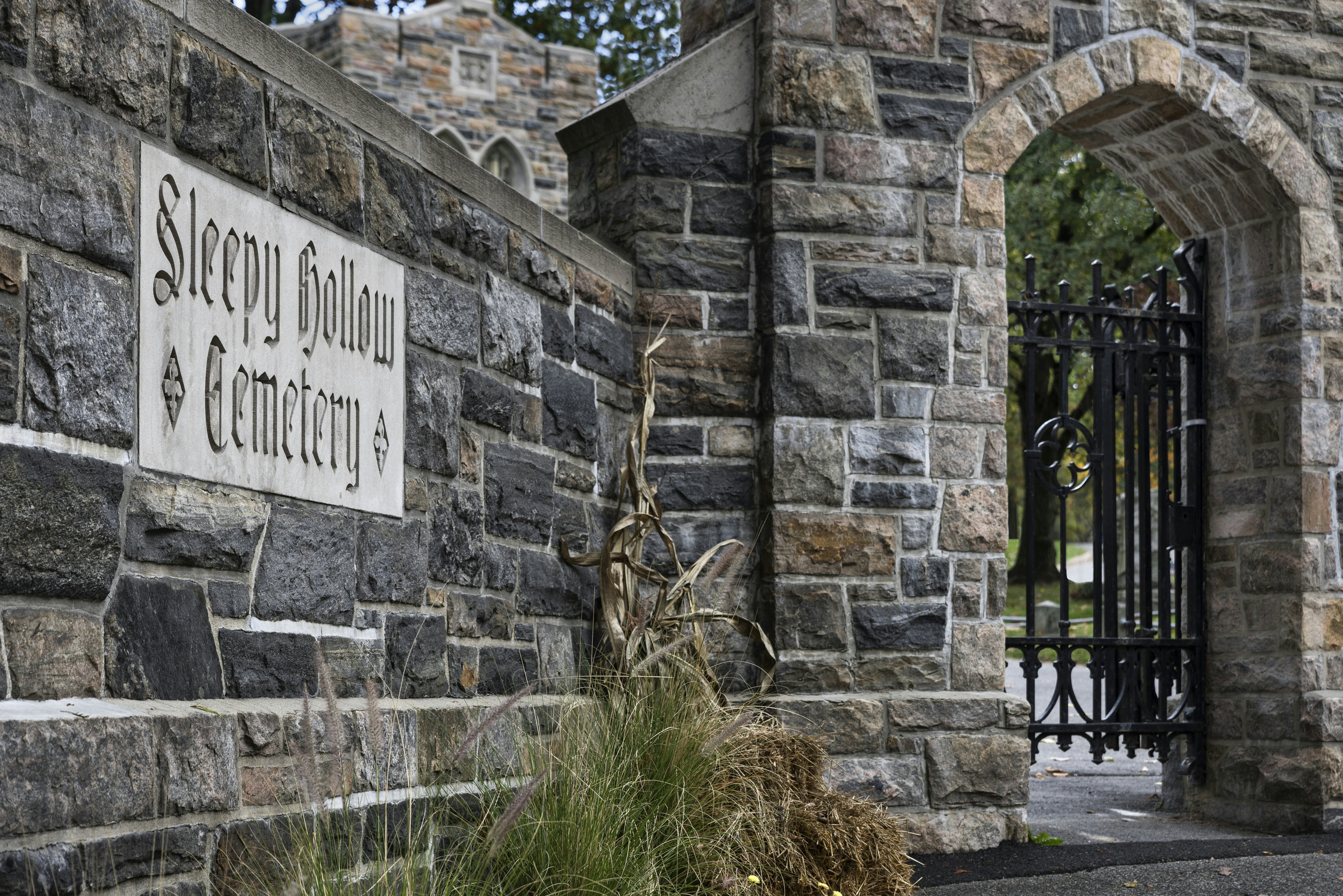
Get spooked in Sleepy Hollow
Read The Legend of Sleepy Hollow, author Washington Irving's 1819 tale of ill-fated Ichabod Crane and the Headless Horseman, before visiting its namesake village on the Hudson River. (Tim Burton's 1999 screen adaptation is also worth watching).
Sleepy Hollow pays homage to its famous folklore with monuments and attractions that highlight the tale's characters and destinations, and every Halloween, people arrive in droves to soak up the spooky spirit. Although many of October's events cost money – including the Great Jack O'Lantern Blaze, featuring thousands of illuminated pumpkins – visiting the legend's real-life locations is free.
Begin your journey at the Old Dutch Reformed Church, a 17th-century chapel and cemetery where legend says the pumpkin-wielding horseman arose from his grave. Irving's final resting place is in the adjacent Sleepy Hollow Cemetery, near the headstone of industrialist Andrew Carnegie.
An 18-ft sculpture depicting Ichabod Crane and his galloping tormenter is a short walk away en route to Philipsburg Manor – an 18th-century farm also named in Irving's tale.
In 1750, roughly two dozen enslaved people lived and worked at the manor – a reality far more sinister than Sleepy Hollow's fabricated legend. Although the site is temporarily closed, it's possible to view the property by heading to the Rockefeller Estate Visitor Center.
Make a reservation at Magazzino Italian Art
A 20,000-sq-ft Brutalist building, 16 Sardinian donkeys and contemporary art from the 1960s onward: Magazzino isn't your nonna's Italian art museum. There’s no Da Vinci or Donatella, though most of the donkeys do have names starting with “D.”
Instead, this collection – assembled by founders Nancy Olnick and Giorgio Spanu – spotlights postwar Italy's creative geniuses with the intent to update America’s perspective on the Old Country's art scene.
In warm weather, a courtyard hosts concerts, movie screenings and the occasional aperitivo hour - the center's only stereotypically Italian offering. Entrance to the museum is free with a pre-booked reservation.
For NYC day-trippers, accessing Magazzino is a breeze. Take Metro-North from Grand Central Terminal to Cold Spring; the museum is a 10-minute drive away. Car-free travelers can save money by taking a shuttle bus that provides service to and from the station.
Top things to do in the Hudson Valley

Peep fall foliage on an autumn road trip
Hudson Valley forests erupt in fiery colors between late September and early November, inspiring an annual pilgrimage of leaf peepers who delight in the season's bounty.
Hiking trails are the most common spots to enjoy fall flora, but for a comprehensive look at the region's foliage, consider a road trip gliding along both sides of the Hudson.
Tiny towns connected by tree-lined roads and state parks make picturesque pit stops on this four-hour excursion, starting in Nyack and ending in Tarrytown.
To begin the journey, head north on Rte 9W as it leaves Nyack and climbs along the Hudson's western banks toward Bear Mountain State Park. Continue on 9W's serpentine ascent through Storm King State Park to Kingston – New York's first state capital.
Follow the Kingston-Rhinecliff Bridge across the Hudson River, then head south on Rte 9 as it breezes past historic mansions in Staatsburg and Hyde Park.
Connect with Rte 9D near Wappinger Falls and trace the river to artsy Beacon, through the Hudson Highlands and toward Manitou. Finally, take Rte 202 at the Bear Mountain Bridge and continue south past Peekskill until reaching Tarrytown. Aside from gas money and road snacks, this mid-Hudson Valley tour can be done on the cheap.
Explore the Vanderbilt Mansion’s gardens
In the 19th century, wealthy New Yorkers looking to escape Manhattan's oppressive landscape found solace along the Hudson River's verdant banks. Many of the mansions they constructed – employing the talents of the best architects, artists and landscapers du jour – now stand as reminders of America's Gilded Age opulence.
There's Kykuit, John D Rockefeller’s Sleepy Hollow summer home; the Gothic-inspired Lyndhurst mansion in Tarrytown; Queen Anne–style Wilderstein estate in Rhinebeck and Franklin D Roosevelt's Colonial Revival home in Hyde Park.
For a free glimpse into the lives of these royal families, head to the Vanderbilt Mansion, located five minutes north of FDR's abode. Touring the interior of the 1898 beaux arts mansion costs $10, but exploring the grounds is gratis.
Built for Frederick W Vanderbilt by McKim, Mead, and White, the architectural firm behind the Brooklyn Museum, the Vanderbilt home is an ostentatious 54-room display of riches.
Gaze at the limestone exterior, and it's easy to imagine the Flemish tapestries and Venetian ceiling hidden inside. The Italianate garden is no less fussy, and in spring, colorful buds turn the grounds into a living Renaissance painting.
Sloping lawns lead to sumptuous Hudson River views, and a 2.5-mile trek loops around the property. Plan a picnic to enjoy the scenery, just like the Hudson Valley's old-school elite.
You might also like:
Best day trips from New York City
Top 15 beaches in New York
The Catskill’s best swimming holes and lakes for a relaxing dip











